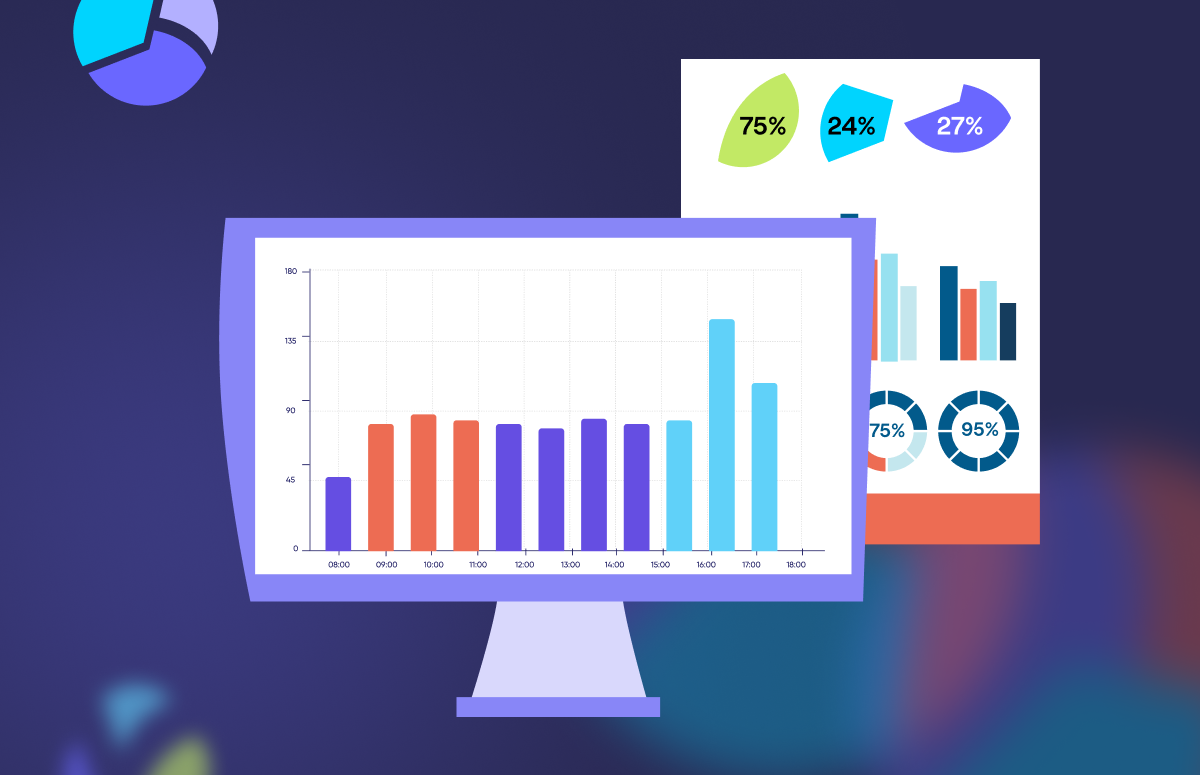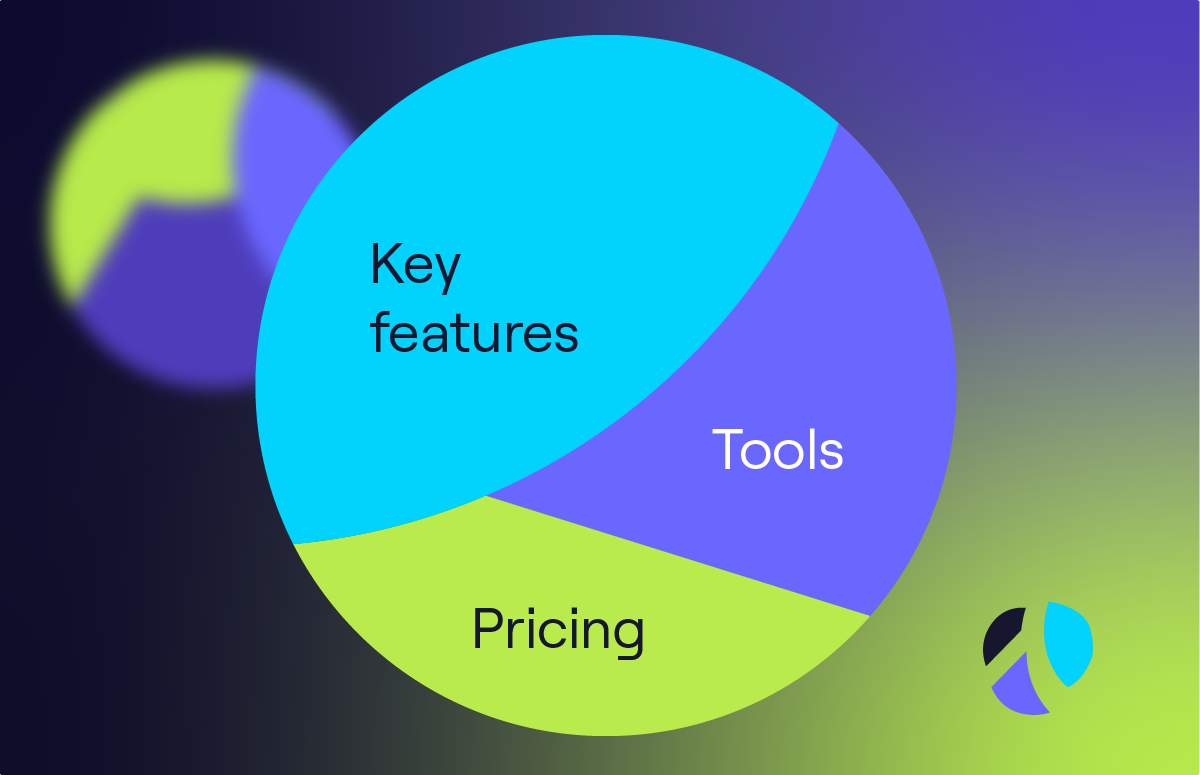Data Decay & Degradation: The True Impact on Your Business
Contact data is changing right now as you read this.
People have switched jobs, and phone numbers are now wrong.
That’s data decay - and it costs money.
The numbers are eye-opening: 22.5% of your B2B data (HubSpot) goes bad yearly. Think about that. If you’re working with a database of 10,000 contacts, over 2,000 will be wrong by next year. That means wasted marketing dollars, frustrated sales teams, and deals that slip through your fingers.
About data decay
Your contact database and CRM decay faster than you think. When someone gets a new job, changes their email, or relocates - your carefully maintained data takes a hit. And with 30% of employees switching jobs annually (FormStory), there’s a good chance a third of your contact list is already wrong.
But it’s not just about people moving around. Companies merge, rebrand, or shut down entirely.
Sales teams discover this the hard way - through bounced emails and calls that lead nowhere. When they realise they’re chasing ghosts, they’ve already wasted hours pursuing cold leads.
So, what is the price tag on data decay?
A whopping $15 million per year for the average business, according to Gartner. That’s real money walking out the door through failed marketing campaigns and sales teams targeting the wrong people with outdated information.
But -
You can get ahead of this. A trusted data provider, regular data checks and updates aren’t just good practice. They’re essential. Without them, your business runs on yesterday’s news instead of today’s facts.
Work out the cost of data decay with our calculator, plus how much you could save with Cognism Enrich. 👇
Why data decay needs to be addressed
Data decay isn’t just annoying - it’s eating into your profits right now.
Here’s how:
- Sales efficiency. Your sales team wastes weekly hours calling people who left their jobs months ago while hot leads go cold because contact info is wrong.
- Marketing money down the drain. High email bounce rates aren’t just statistics - they’re signs that your marketing budget is wasted on campaigns that never reach their targets.
- Revenue impact. IBM found that incorrect data cuts into 27% of potential revenue. That’s over a quarter of your possible earnings vanishing because you work with stale information.
- Damaged customer trust. Send one too many emails to the wrong person, or miss a crucial update about a client’s new needs, and you risk pushing them straight into your competitor’s arms. In today’s market, where personalisation matters more than ever, data decay makes you look sloppy and out of touch.
The fix isn’t complicated, but it needs constant attention. Regular data cleaning and verification aren’t just maintenance—they’re an investment for better targeting, smarter decisions, and stronger revenue growth.
How? Use solutions that actively prevent data decay.
Tools like Cognism leverage real-time data verification and enrichment to ensure sales and marketing teams always have accurate, up-to-date contact information. This approach reduces wasted efforts, improves conversion rates, and maximizes ROI.
Types of data decay
Your data doesn’t just decay in one way. Data decay comes in multiple forms, each degrading your information quality differently. If you understand these types, it helps you spot problems early and apply the right fixes.

Aging
Every database has an expiration date. Your pristine static contact list starts decaying the moment someone hits “save.” People jump jobs, companies vanish overnight, and phone numbers die quiet deaths. It’s not a matter of ‘if’ your data will age - it’s ‘when’ and how fast.
The damage shows up in your daily operations, like when your sales team discovers a hot lead left the company six months ago. Marketing emails bounce because half your contact list has moved on. That carefully researched prospect list from last year? It might as well be ancient history.
This decay hits hardest in fast-moving industries. Tech companies, startups, and consulting firms can see their data spoil in months, not years. When a single startup shutdown or acquisition can invalidate hundreds of contacts, you’re fighting a constant battle against time.
Mechanical decay
Systems break.
Data breaks with them.
When your B2B databases stop talking to each other or someone botches a data import, you get mechanical decay. It’s the messy side of data management that comes from technical problems.
Picture this - you switch to a new CRM, and suddenly, half your customer notes are in the wrong places. Phone numbers show up in email fields. Records duplicate themselves. It’s a mess, and it happens more than you’d think.
Bad storage makes it worse. Files corrupt when you least expect it. Old software can’t read new formats. And if you’re not backing up regularly, one system crash can wipe out months of valuable information.
So:
- Get good systems in place.
- Backup your data.
- Check for errors regularly.
- Test any new software before you move all your data into it.
External factors
Sometimes, your data decays because the world changes around it. Think about what happens when two big companies merge - suddenly, all those carefully collected email addresses stop working. Or when new privacy laws pop up, your old contact lists becomes useless overnight.
Market changes hit hard, too—changing buyer behaviour, a pandemic. And those tracking cookies you relied on? They’re going out as browsers crack down on privacy.
The key is staying flexible. Keep an eye on industry news, update how you collect data, and make sure you follow the latest rules. The world won’t stop changing - your data needs to keep up.
Logical decay
Just because data looks right doesn’t mean it’s useful anymore. Logical decay is when your technically “correct” information stops making sense in the real world.
Here’s what we mean: Your database says a lead is “hot” or has a high lead score - but they haven’t opened your emails in six months. Or you’ve got the same customer listed three times under slightly different names.
Smart companies catch this early. They use tools to spot patterns, clean up duplicate records, and flag when data stops matching reality... because having the wrong information can be worse than having no information.
The true impact of data decay
Data losing accuracy creates a ripple effect across the entire business.
Data decay slows operations and leads to lost revenue, wasted resources, and legal trouble.
Wasted sales efforts
Your sales team is only as good as its contact list. When that list goes bad, it’s shooting in the dark. Ask any sales rep about their biggest headache—40% will tell you it’s oudated data (InsideSales). Every bounced email, and wrong phone number wastes time they could spend closing deals.
It also messes with your analytics. When half your emails bounce, or calls go nowhere, your campaign metrics look terrible - even if your actual message is solid. You fix problems that might not exist while missing the real issues.
Financial consequences
The financial impact goes deeper than lost sales. Think about what happens when your customer records are wrong:
- Invoices go to the wrong addresses.
- Forecasts use outdated numbers.
- Budgets get built on bad assumptions.
- Marketing dollars target people who can't buy.
Each mistake costs money, and they add up fast. Worse, these errors compound over time as decisions get made using faulty information.
Compliance and legal risks
Data privacy isn’t optional anymore. Laws like GDPR and CCPA mean you need to know exactly what customer data you have and why.
Cognism’s built compliance into it’s database: we notify everyone in our database (a GDPR marketing requirement), keep only business emails (never personal), and scrub data aginst 13 Do-Not-Call (DNC) lists.

The solution? Think of data maintenance as essential to any other business. Regular updates, cleaning, and validation aren’t extra tasks - they keep your business running and growing.
How to build a business case for addressing data decay
Here’s how to address and prevent data from decay. These three proven ways to keep your data fresh and useful for your business:
1. Use an accurate data provider
Stop wrestling with outdated spreadsheets or a CRM that’s seen better days. A good data provider helps to keep your information fresh automatically. Cognism, for example, enriches your data. We’re constantly updating our database with real-time data enrichment and verification, so you’re always working with current information.
We care about data quality. For example, our Diamond Data® consists of phone-verified numbers, connecting you with 87% of your list. Here are some results from an independent study. 👇

What you get:
- High-quality European database.
- Real-time verification of contact details and company information.
- Automatic updates when people change jobs.
- GDPR-compliant data that keeps you safe from legal risks.
- Fresh, engaged leads that respond to your outreach.
The impact? Your sales team stops wasting time on dead ends, your marketing campaigns hit real prospects who can buy, and you save countless hours on manual data research.
2. Regular audits
Think of data audits like spring cleaning - necessary and revealing. Every quarter (or at least twice a year), you need to:
- Hunt down and merge duplicate records that mess up your reporting.
- Remove contacts who haven’t engaged in months.
- Check your customer and prospect data against trusted sources.
- Clean out information that’s no longer relevant to your business.
- Verify that your contact details still work.
Regular audits mean better decisions, cleaner reporting, and fewer compliance headaches. Without them, decaying data piles up until your reports can’t be trusted, and your teams waste time chasing ghosts.
3. Automated data updates
Don’t make your team update records by hand - it’s slow and prone to errors. Smart automation keeps your data fresh with:
- CRM integrations that update customer information automatically.
- AI-powered tools that spot and fix outdated information
- Automated workflows that flag suspicious data patterns
- Email verification tools that catch and clean invalid email addresses before they hurt your campaigns.
- Real-time enrichment that fills in missing details.
This means your team spends less time fixing data and more time using it to close deals. Plus, you stay competitive in markets where having accurate information can make or break a sale.
The final say on data decay
Your database is like a race car - it needs constant maintenance to stay competitive. Every outdated contact, every wrong number, and every bounced email is money left on the table.
The solution is simple but requires commitment: partner with a data provider that keeps your information fresh and accurate.
Business success comes down to making the right moves at the right time. With clean, current data, you’ll know exactly when and where to make them.



